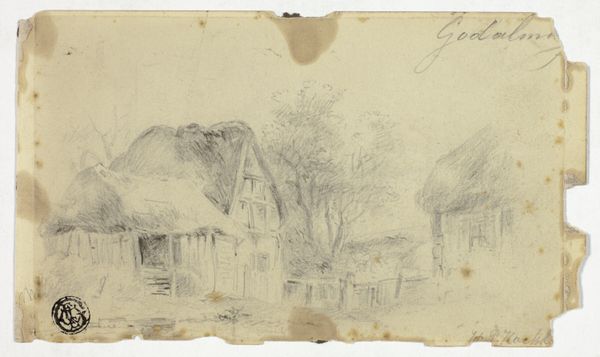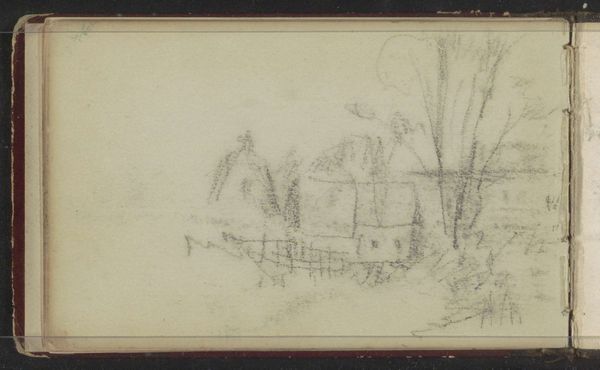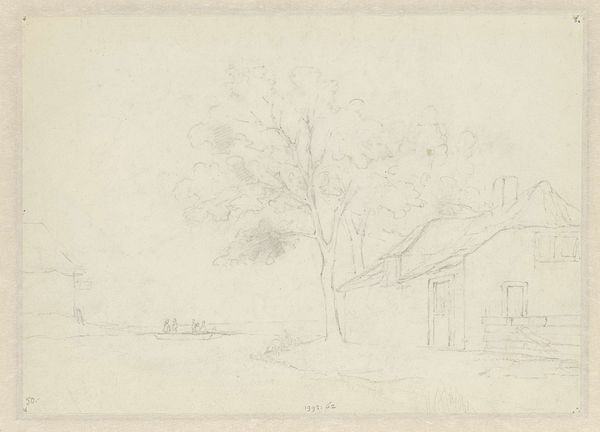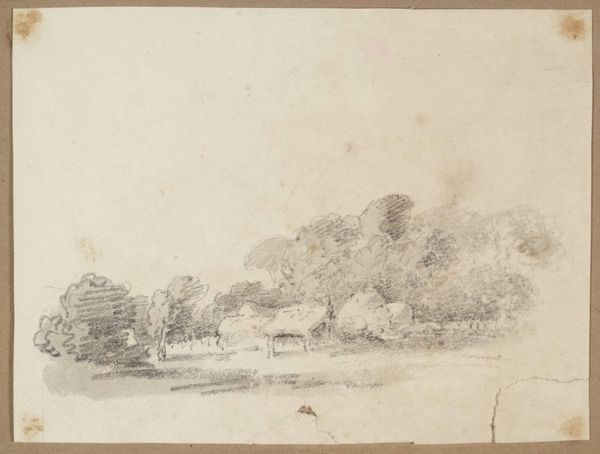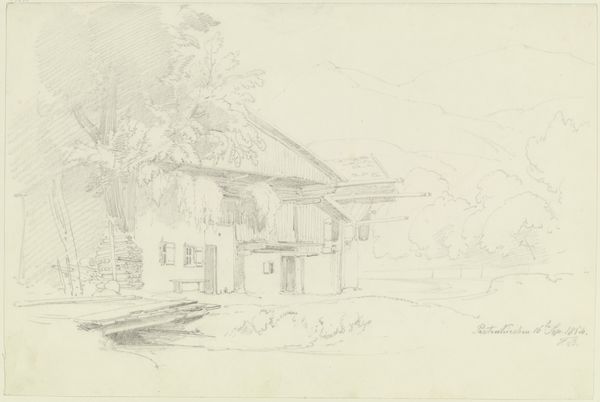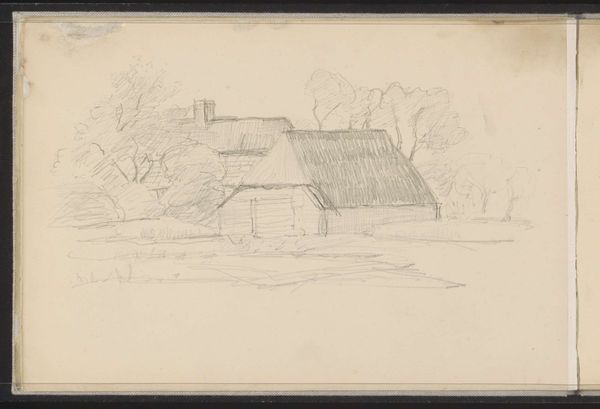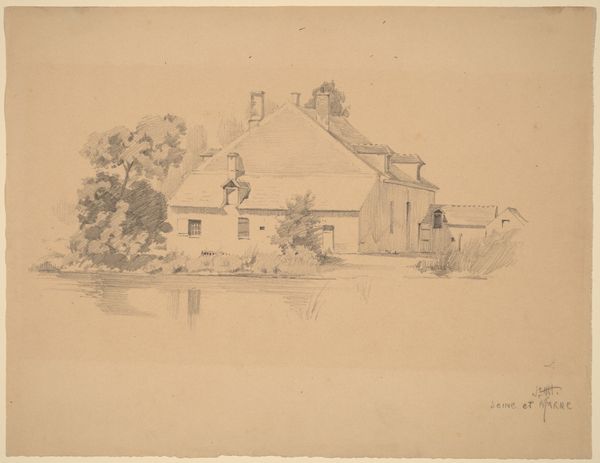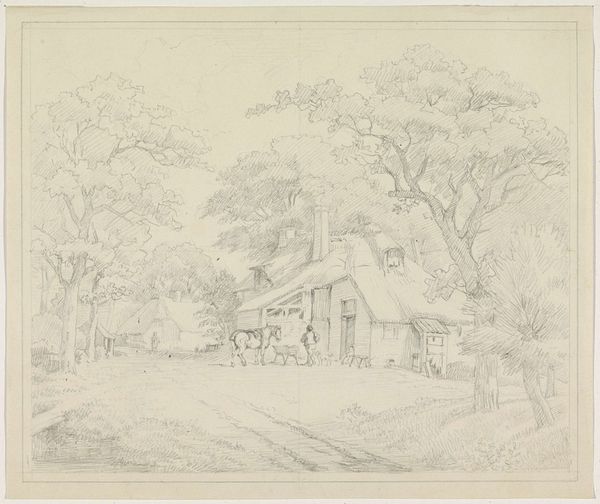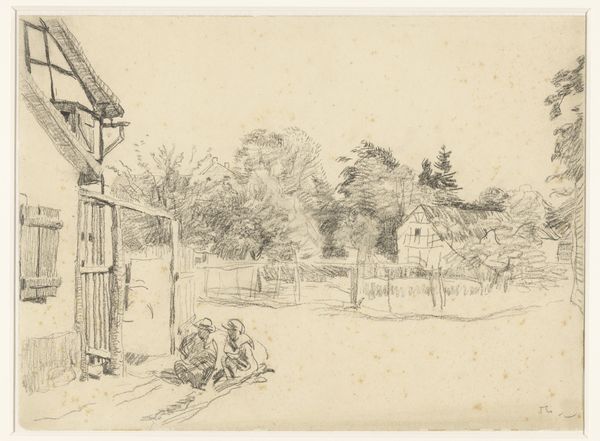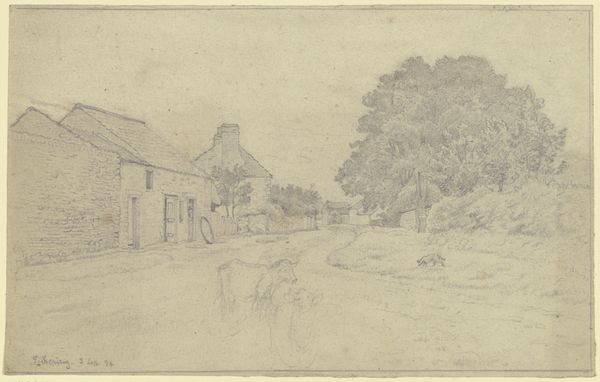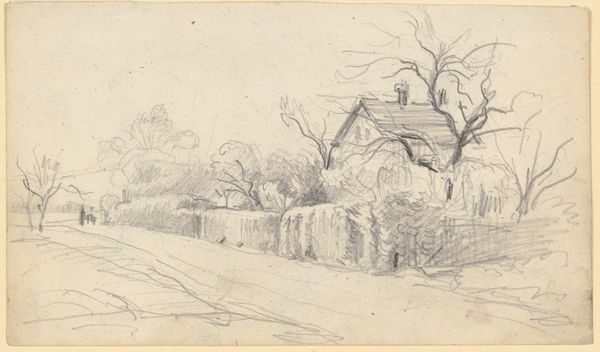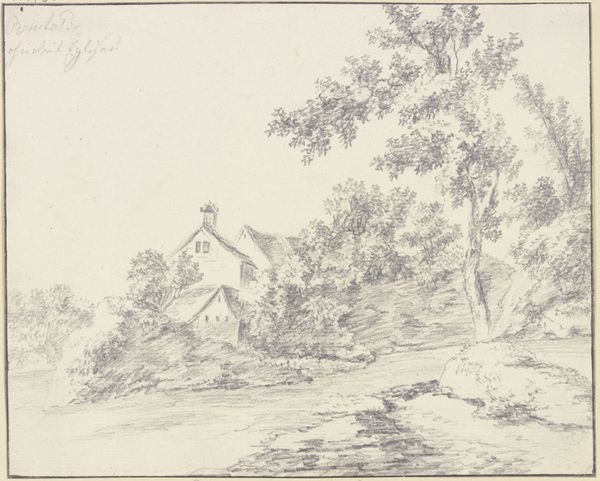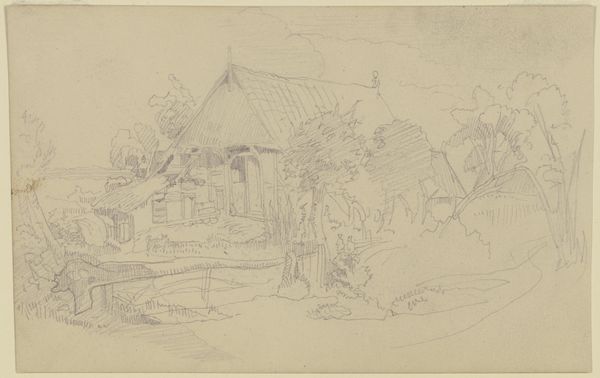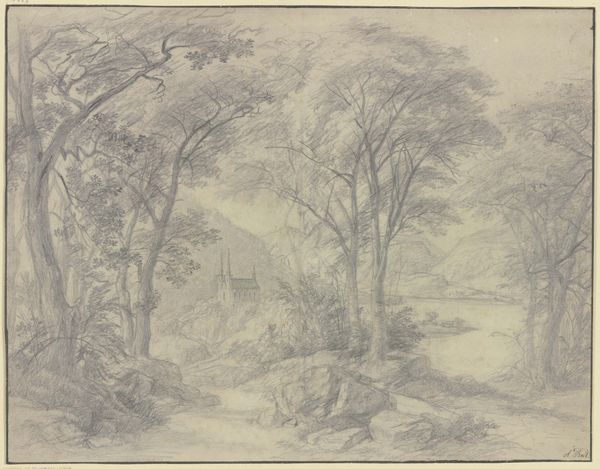
Dimensions: 89 × 152 mm
Copyright: Public Domain
Editor: This is Hendrik Pieter Koekkoek’s "Compton," created around 1877. It's a graphite drawing on paper, and the muted tones create a feeling of quiet contemplation. What do you see in this piece? Curator: Initially, my eye is drawn to the subtle interplay of line and shadow. The artist’s meticulous rendering of textures – note the rough, thatched roof versus the smooth water – establishes a compelling visual rhythm. How do you think the medium contributes to the overall effect? Editor: Graphite makes it easy to make changes. It feels like a study, or preliminary sketch. It doesn't seem polished. Curator: Precisely. And it is in the imperfection that we may understand this work best. Observe how the artist utilizes hatching and cross-hatching to define form and depth. There is an intimate connection between hand, material and subject. Also, let’s consider the composition itself. Do you notice anything particularly striking? Editor: The placement of the building slightly off-center gives it a more natural feel, like it was captured in a passing moment. And the reflection in the water below is very clever! Curator: Yes! The asymmetry creates a dynamic tension. The reflection subtly mirrors the solid form above, further underscoring the inherent formal interplay, yet also inviting closer inspection of where such certainties break down. Are such things, therefore, reflections, refractions or phantoms? Editor: This focus on form and texture really shows how much can be communicated through a simple drawing. Thanks, I’m learning a lot! Curator: My pleasure. Understanding such principles permits new and unique opportunities to appreciate such renderings, both in themselves and in their potential.
Comments
No comments
Be the first to comment and join the conversation on the ultimate creative platform.
